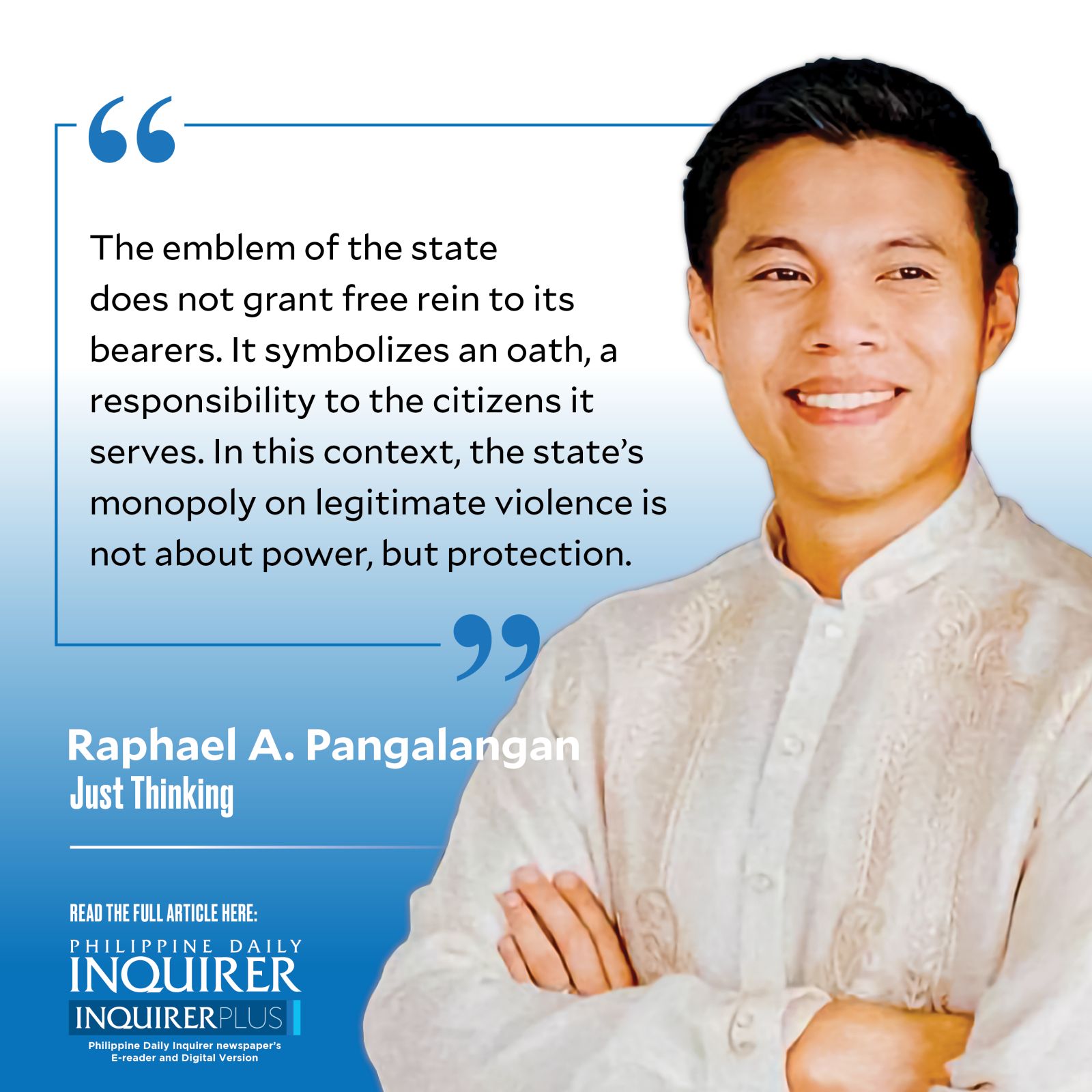The legitimacy of violence
Never too soon to prepare, goes conventional wisdom.
Philippine National Police chief Gen. Benjamin Acorda Jr., in a show of prudence, recently assured that the police presence at the July 24 State of the Nation Address (Sona) would be “just enough” to ensure security in the annual event. “As much as possible, we don’t want it to be an (sic) overkill,” he said.
Article continues after this advertisement“Overkill.” Choice words by the PNP chief, no doubt. This maximum tolerance policy sounds like a welcome turnaround from the heavy-handedness of the Duterte years. But one could ask: Why talk about overkill? Who said that the state can engage in violence in the first place? Such questions remind me of a recent conversation I had with my students at the University of the Philippines College of Law. I teach jurisprudence, which I’ve liberally construed to embrace not only the nature of law, but moral philosophy and political obligations as well. (The Sandelian in me would otherwise refer to the course as “ethics” or “justice.”)
The question was posed: What makes the state so special? A number of answers were given, coming from across the spectrum. Some students invoked a Kantian understanding of duty, while others cited the welfare function of state. One student impressively, but likely unwittingly, cited the Montevidean elements of statehood (i.e., a permanent population, a defined territory, a government, and the capacity to conduct international relations). All answers are good and deserving of semesters-long foci in and of themselves. But in the course of the discussion, we found ourselves zeroing in (admittedly by my own design) on one other possibility: violence.
The defining character of the modern state is its monopoly of force. The knee-jerk reaction to this claim would perhaps be to disagree. Even nonstate actors—you, I, and our neighbors far and wide—may engage in acts of violence. Articles 11 and 12 of the Revised Penal Code justify and exempt violence from criminal liability under certain circumstances. Even the Civil Code, through what is known as the doctrine of self-help codified in Article 429, permits “[t]he owner or lawful possessor of a thing … the right to exclude any person” by force.
Article continues after this advertisement“Where’s monopoly?” one may ask. Well, dear reader, if that’s the stance you take, I invite you into the proverbial classroom. Self-defense or defense of property does not rebut the monopoly of force. On the contrary, it simply illustrates it. The only reason violence is seen as legitimate in Articles 11, 12, 429, and similar provisions is because the state says so. Force may be used by some and others, but it is only aboveboard with the state’s blessing. This is precisely why the “monopoly of violence” has likewise been referred to as the “monopoly of the legitimate use of force.”
But not all forms of force are made equal. First, we must distinguish between the “use of force” in the international and domestic realms. Internationally, the use of force is traditionally associated with the jus ad bellum—the law of war that delineates the conditions when states may resort to armed force against another.
Domestically, the “use of force” takes on a different meaning and is seen not only in militaristic terms, but for the purposes of policing. Here, there is a hierarchy to force: nonlethal, such as a police officer’s voice or physical presence; less lethal, such as through the use of batons, tear gas, electroshock weapons, and rubber bullets; and lethal, through the use of firearms and other potentially lethal force.
Notably, the United Nations (UN) avoids using the term “nonlethal,” since the use of any weapon can have fatal consequences. At the other end of the violence spectrum, the UN has endorsed a single principle to justify lethal force: To protect life. The UN Basic Principles on the Use of Force and Firearms by Law Enforcement Officials provides that the “intentional lethal use of firearms may only be made when strictly unavoidable in order to protect life.”
The PNP has itself adopted the continuum of force which mirrors its gradations as earlier mentioned. Sure, the social contract might vest the state with the power to exercise violence, but that power is limited. The rules underpinning state force categorically position it as a last resort, a principle that Acorda and his team must imprint in their ranks in the lead up to, during, and following next month’s Sona.
The emblem of the state does not grant free rein to its bearers. It symbolizes an oath, a responsibility to the citizens it serves. In this context, the state’s monopoly on legitimate violence is not about power, but protection. The badge is not a free pass, but a pledge to adhere to the very rules that the state itself has established.
—————-
thinkjustly@gmail.com

















